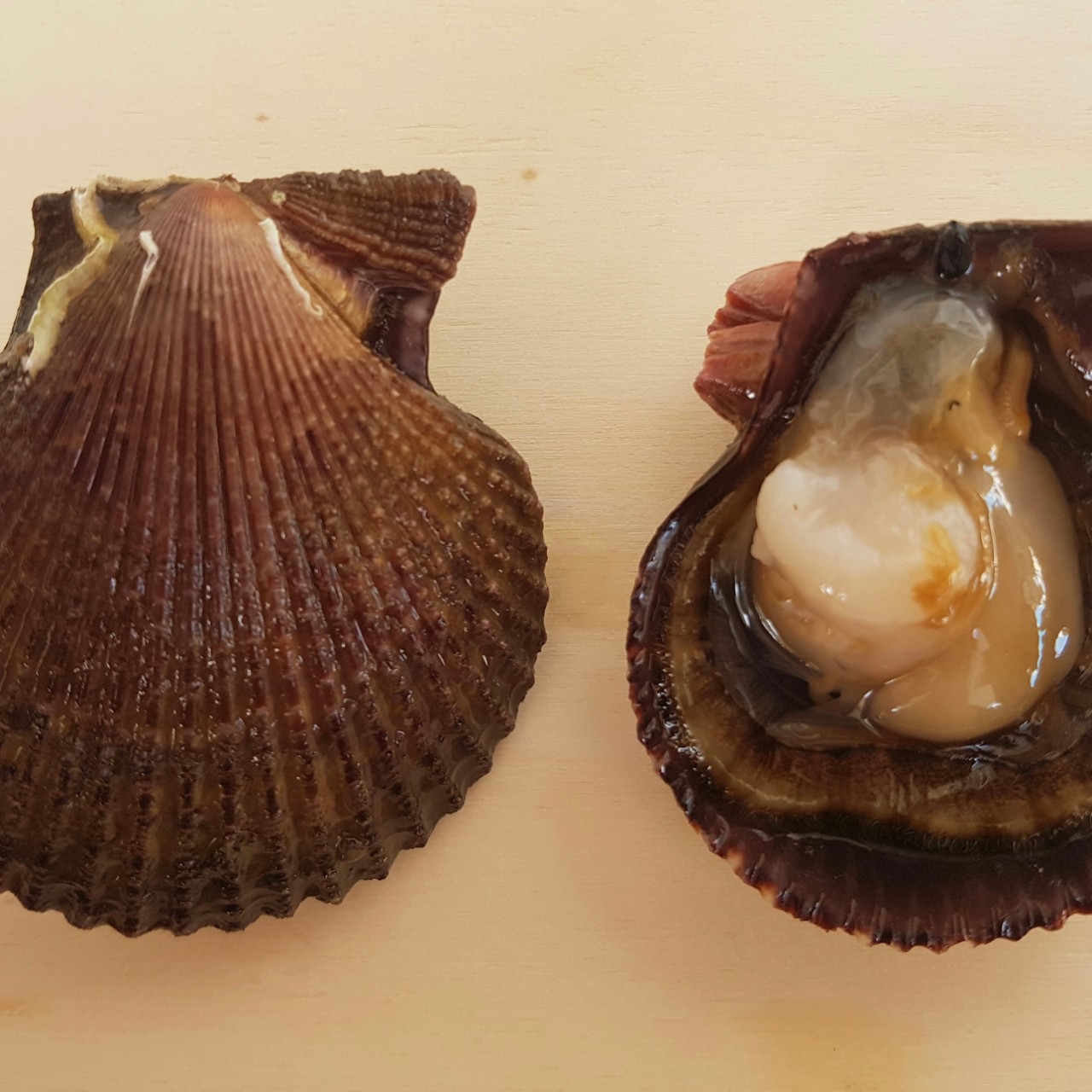- by John Barlow @John_Barlow_LS9
.png.transform/rendition-xs/image_image%20(1).png)
Its exquisite taste makes them ideal for eating them alone and also as an ingredient for gourmet preparations

- by John Barlow @John_Barlow_LS9
This mollusc is one of the jewels of Galician gastronomy, and is available canned in a various of gourmet preparations. We talk to some of the leading producers, and also explain how to distinguish zamburiñas from similar molluscs.
Born in the Atlantic
The zamburiña (chlamys varia), known in English as variegated scallop or black scallop, is a variety of small scallop that thrives in the cold Atlantic waters of the Galician coast, in north-western Spain. It belongs to the same family (Pectinidae) as the far larger great vieira (scallop, a.k.a. the St James scallop), the shell of which is the symbol of the Camino de Santiago.
Apart from being smaller than its more familiar cousin, the zamburiña is distinguished by its extraordinary taste: a subtle sweetness with a hint of brine, but also a distinct touch of umami, especially when grilled. Their flesh is firm but tender, and not chewy.

A sustainable delicacy
Living off plankton, they favour shallow coastal waters, clinging to rocks or seaweed, or residing on the seabed, to depths of about 100 meters. Their oval, ribbed shells range from off-white to brown or even purple. Adults reach between 4 and 7 centimetres in length, so you’ll need a dozen for a decent plateful (and probably best not to share…).
Although they’re abundant, collecting them is labour-intensive, and thus they are relatively expensive. They’re collected using an ancestral (and uniquely Galician) form of small dragnet, the bou de vara, or harvested from the sand using a rake, as with larger scallops. They can also be hand-picked from rocks.
In Galicia, collecting zamburiñas is strictly controlled (only 80 licences are currently granted for the use of dragnets) and the areas of collection are closely monitored by both local guilds and the regional government, meaning that stocks are always sustainable and of optimal quality.
Zamburiñas versus volandeiras: A quick lesson
Another very similar variety of small scallop is the volandeira, also known as the queen scallop. Somewhat more rugged, volandeiras can found a little further out to sea. Their shell is larger (10-12 cm), more elongated with two ‘ears’ on the hinge of its shell. By contrast, the zamburiña has just one ‘ear’, which gives it a weirdly asymmetrical appearance.
Then there’s the gonads! Yes, the orange-coloured sack that you’ve seen in scallops are its sex organs (all scallops are self-reproducing hermaphrodites). Volandeiras have an orange gonad sack, whereas zamburiñas typically have an off-white or beige sack.
The meat of a zamburiña is dark in colour, almost a violet-brown, whereas that of the volandeira is lighter, and a little less firm. In terms of flavour, zamburiñas have slightly more intense, pronounced flavour, which adds to them being considered the greater delicacy.

Gourmets’ corner
Like all great seafood, zamburiñas should be prepared simply and quickly: on the griddle, steamed, or a few minutes in the oven with a drop of oil and a hint of salt. They don’t really need anything else, such is the complexity of their flavour. Plus, 100 grams of zamburiñas have only 20 k-calories, plus iron, potassium, magnesium, and vitamins A and B.
The exquisite taste of zamburiñas makes them ideal for gourmet preparations, notably in canned form, itself an artisanal craft in Galicia. For example, the company Real Conservera, located in Cambados, the small dock town where most Galician zamburiñas are landed, uses a light, clear broth (onion, bay leaves, lemon, water and salt), which serves to showcase all the natural splendour of the zamburiñas, with amazing results.
Another local company is Los Peperetes, run by the three Lorenzo brothers and their mother. They prefer a traditional Galician sauce (oil, pimentón, garlic), which adds a luscious orange glow and reminds you of eating in one of the region’s innumerable fish and seafood restaurants. As General Director Jesús Lorenzo explains, "the secret for any high-end producer of canned seafood is the selection of the very best product close to its source, plus the scrupulous process of selection and canning, including the secret recipe for the sauce” (which in his case is his mother’s, and hasn’t changed for two generations).

Both Los Peperetes and Real Conservera were multiple prize winners at this year’s prestigious World’s 101 Best Canned Products from the Sea competition, where Galician products often take a hefty number of top awards.
Another stellar producer is Rosa Lafuente. Situated on the shoreline of the Ría de Arousa, the estuary from which most zamburiñas are collected, they use a sauce combining great scallops and onion. It’s distantly sea-sweet, but the zamburiña’s more complex palette of flavours shines through.
A scallop sauce is also used by La Curiosa, another traditional producer, this time in a slightly richer sofrito (tomato, onion, olive oil, wine and pimentón).
All of these producers use sustainably-sourced fresh produce, all purified in local depuration plants on the Galician coast, another artisanal process with a long history in Galicia. The company Mar da Morosa, for example, has its own depuration plant and sells fresh zamburiñas, including next-day delivery.
So, there are plenty of ways to try zamburiñas, one of the great gastronomic passions of Galicia. As Iago Conde, Commercial Director of Real Conservera, notes, these gourmet zamburiñas are “a surprise with every bite. They take you on a unique journey to the unique tastes of Galicia’s coastline.”